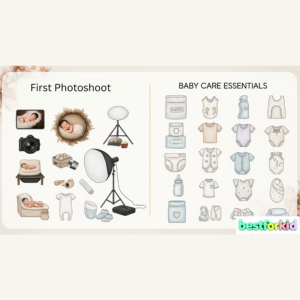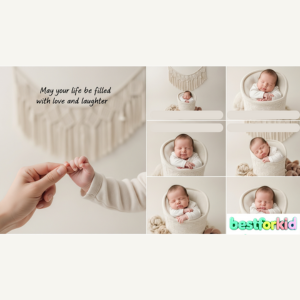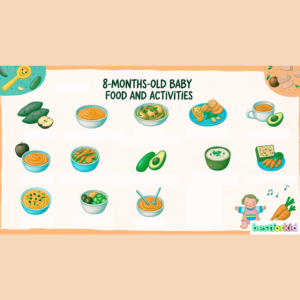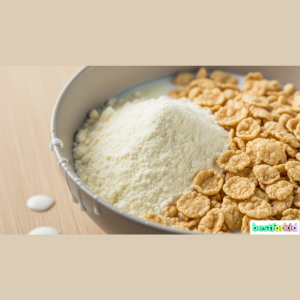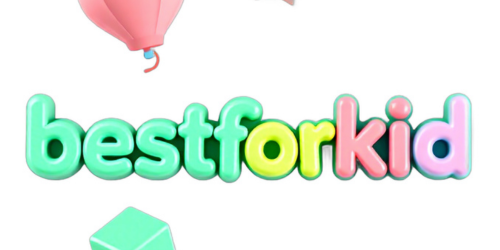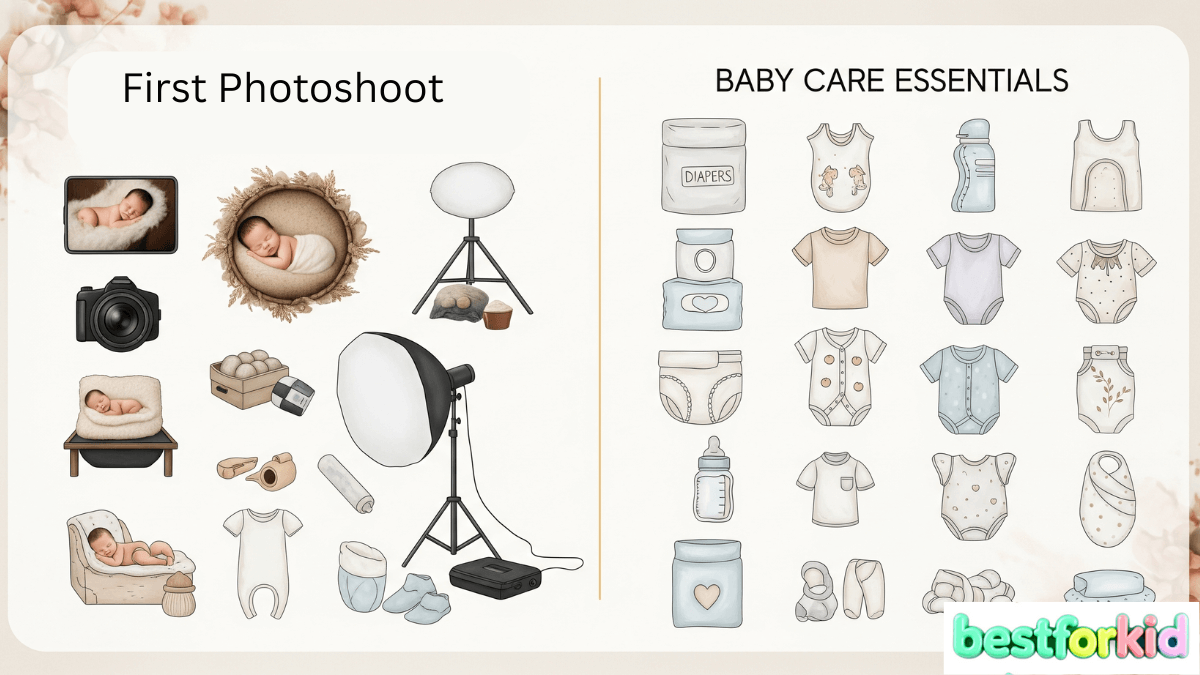
Welcoming a new baby is a beautiful and life-altering experience. For first-time parents in India, the journey is a mix of excitement and happy confusion. Your world is suddenly filled with tiny clothes, baby gear, and a lot of love. But let’s be honest, the preparation can feel overwhelming. You might be asking, “What do I really need?” This is where a comprehensive newborn checklist comes to the rescue. Think of it as your friendly guide to navigating the wonderful world of baby shopping. This list will help you stay organized. It will also help you avoid last-minute panic. We want to ensure you have all the baby care essentials ready for your little one’s arrival. From the first adorable photoshoot to daily care, we’ve got you covered. So, take a deep breath. Let’s get you prepared for this incredible new chapter.
Clothing: Dressing Your Little Bundle of Joy
Newborns have delicate skin, so comfort is key for their wardrobe. In India, with our diverse climate, choosing soft and breathable fabrics is important. Many Indian parents prefer traditional garments like jhablas. They also like modern essentials such as onesies. Here’s a practical clothing checklist to get you started. A good tip is to buy a mix of newborn and 0-3 month sizes. Babies grow incredibly fast. Also, choose clothes with easy snaps or zippers. This makes dressing a wriggly baby less of a challenge.
Must-Have Clothing Items:
- Onesies or Bodysuits (6-8): These are a staple in any newborn’s wardrobe. They are easy to put on and take off. This is a blessing during frequent diaper changes. Opt for both short-sleeved and long-sleeved ones. The choice depends on the season.
- Jhablas (6-8): These are traditional Indian front-open cotton tops. They are perfect for the Indian climate. They are especially good in summer as they are airy and comfortable.
- Sleepers or Footed Pajamas (4-6): Ideal for a good night’s sleep. These keep your baby cozy from head to toe. The zip or snap closures make nighttime diaper changes much easier.
- Soft Cotton Bottoms or Leggings (4-6 pairs): These can be paired with jhablas or t-shirts. They make a complete and comfortable outfit.
- Swaddles or Wrapping Cloths (4-6): Swaddling helps newborns feel secure. It mimics the coziness of the womb. This can lead to better sleep. Muslin swaddles are a great choice. They are lightweight and breathable. This makes them perfect for the Indian weather.
- Caps, Mittens, and Booties (2-3 sets): Caps are essential to keep your baby’s head warm. This is especially true in cooler weather or air-conditioned rooms. Mittens prevent them from scratching their delicate face with their tiny nails. Booties or socks keep their little feet warm.
- Sweaters or Jackets (1-2): If you’re expecting a winter baby, a couple of warm sweaters are a must. Light jackets are also good for outings.
Choosing Clothes for the Indian Climate:
India’s weather varies greatly. Your baby’s wardrobe will depend on your location and the season. For summers, lightweight and breathable fabrics like cotton and muslin are ideal. Loose-fitting clothes in light colors help reflect heat. During the monsoon, quick-drying fabrics are a good choice. Layering is also a great strategy to adapt to temperature changes. For winters, you’ll need warmer clothes like sweaters and jackets. Layering with thermal wear can provide extra warmth.
Diapering Station: Your Go-To Spot for Cleanups
Get ready for lots of diaper changes! This will be a big part of your daily routine. A well-organized diapering station can make the process much smoother. It also makes it more hygienic. Here’s what you’ll need for your newborn checklist for diapering. It’s a good practice to have a separate bin for disposing of used diapers.
Diapering Essentials:
- Diapers (Newborn size): You can choose between disposable diapers or modern cloth diapers. It’s a good idea to start with a small pack of disposables. This helps you see what suits your baby’s skin. If you opt for cloth, you’ll need about 8-10 to start.
- Cotton Nappies: Many Indian families still prefer traditional cotton nappies. These are great for diaper-free time during the day.
- Baby Wipes: Gentle, water-based wipes are perfect for cleaning your baby’s sensitive skin. You can also use soft cotton balls and warm water.
- Diaper Rash Cream: This is a must-have to prevent and treat diaper rashes. Rashes can be common in humid weather.
- Changing Mat: A portable and waterproof changing mat is incredibly handy. It is useful for diaper changes at home and on the go.
- Diaper Bag: A well-stocked diaper bag is essential for outings.
Preventing and Treating Diaper Rash:
Diaper rash is a common concern for parents. To prevent it, change your baby’s diaper frequently. Clean the area gently with water or fragrance-free wipes. Pat the skin dry before putting on a new diaper. Using a barrier cream with zinc oxide can help protect the skin. If a rash develops, allow for some diaper-free time to let the skin air out. If the rash persists or worsens, consult your pediatrician. Some babies may have sensitive skin, so trying different diaper brands might be helpful.
Feeding Must-Haves: Nourishing Your Little One
Feeding is a special bonding time for you and your baby. Whether you choose to breastfeed or formula-feed, being prepared is key. The right essentials will make the experience more comfortable and stress-free. Here’s a breakdown for your feeding newborn checklist. Old cotton dupattas also work well as burp cloths.
For Breastfeeding Mothers:
- Nursing Bras (2-3): These provide comfort and easy access for feeding. It’s wise to buy one size larger than your maternity bra size initially.
- Nursing Pillow: A U-shaped pillow can provide support for both you and your baby during feeding. This reduces strain on your back and arms.
- Breast Pads: These are useful for absorbing any milk leakage.
- Nipple Cream: This can help soothe sore or cracked nipples. This is especially helpful in the early days of breastfeeding.
- Breast Pump: A pump can be helpful for storing milk. This is useful for times when you’re away from your baby. You can choose between a manual or electric pump.
- Milk Storage Bags or Containers: These are necessary for safely storing expressed breast milk.
- Nursing Cover: A nursing cover can provide privacy when you are breastfeeding in public.
For Formula-Feeding:
- Feeding Bottles and Nipples (8-10): It’s good to have a mix of 4-ounce and 8-ounce bottles. You might need to try a few different nipple shapes to see what your baby prefers.
- Formula: Always consult your pediatrician before choosing a formula brand. It’s a good idea to have a can handy even if you plan to breastfeed, for emergencies.
- Bottle Brush: A dedicated brush is essential for thoroughly cleaning bottles and nipples.
- Sterilizer: You can sterilize bottles in boiling water. However, an electric sterilizer can be more convenient. This is especially true if your baby has a weakened immune system.
General Feeding Items:
- Bibs (4-8): These are great for catching drool and spills.
- Burp Cloths (6 or more): These will protect your clothes from spit-ups during burping.
Breastfeeding vs. Formula Feeding:
The choice between breastfeeding and formula feeding is a personal one. Breast milk is considered the ideal nutrition for infants. It provides antibodies that help protect against infections. Breastfeeding can also offer health benefits for the mother. However, breastfeeding can sometimes be challenging. Formula feeding offers convenience and flexibility. It allows other family members to participate in feeding. It’s important to consult with your pediatrician to make an informed decision that works best for you and your baby. Combination feeding is also an option for many families.
Bathtime Fun: Keeping Your Baby Clean and Happy
Bath time can be a delightful and relaxing ritual for your baby. With the right products, you can ensure their delicate skin is well-cared for. In India, many families follow traditional bathing practices. These can be a wonderful experience. Here is a newborn checklist for a happy bath time. For newborns, a sponge bath is recommended until the umbilical cord stump falls off. After that, you can transition to a proper bath a few times a week.
Bathing Essentials:
- Baby Bathtub: A small, non-slip bathtub is safer and more convenient than a regular bath. Some designs come with slings to support newborns.
- Gentle Baby Wash and Shampoo: Use a mild, tear-free, and fragrance-free wash. It should be specifically designed for babies.
- Soft Washcloths: These are gentler on your baby’s skin than regular towels.
- Hooded Towels (2-3): These are perfect for keeping your baby warm and cozy after a bath.
- Baby Lotion or Cream: Moisturizing your baby’s skin after a bath helps to keep it soft. It also keeps it hydrated.
- Massage Oil: A gentle massage with coconut or almond oil before a bath is a common practice in India. It is also very beneficial.
- Cotton Balls: These are useful for cleaning delicate areas like the eyes and ears.
Creating a Cozy Nursery: A Safe Haven for Sleep
Your baby’s nursery should be a safe, comfortable, and peaceful space. You may choose to have your baby sleep in your room for the first few months. However, it’s good to have their own little corner set up. Here’s a newborn checklist for creating the perfect nursery. A comfortable chair is great for late-night feeding and cuddling sessions.
Nursery and Bedding Essentials:
- Crib, Cradle, or Bassinet: A safe and sturdy crib is a very important purchase. Look for one with a firm, well-fitting mattress. Many Indian families also use a traditional *jhoola* or cradle.
- Firm Mattress: A firm mattress is crucial for your baby’s safety. Avoid soft or fluffy bedding.
- Waterproof Mattress Protector: This will protect the mattress from inevitable leaks and spills.
- Fitted Crib Sheets (3-4): Choose soft, breathable cotton sheets.
- Light Blankets or Quilts (1-2): Opt for lightweight, breathable blankets. Wearable blankets or sleep sacks are a safer alternative to loose blankets.
- Mosquito Net: This is an absolute must-have in most parts of India. It protects your baby from mosquito bites.
- Changing Table: A dedicated changing table with storage can keep all your diapering supplies organized. It also keeps them within reach.
- Night Light: A soft night light can be very helpful for middle-of-the-night check-ins. It is also useful for feedings without disturbing the baby too much.
- Baby Monitor: This can give you peace of mind when your baby is sleeping in another room.
Safe Sleep Practices:
Creating a safe sleep environment is crucial for your baby. The American Academy of Pediatrics recommends placing your baby on their back for all sleep times. Use a firm and flat sleep surface like a crib or bassinet. Keep the crib free of loose blankets, pillows, bumpers, and toys. Room-sharing, where the baby sleeps in the same room but on a separate surface, is recommended for at least the first six months. This can reduce the risk of SIDS by as much as 50%. Avoid letting your baby sleep on a couch, armchair, or in a swing for extended periods.
Health and Safety Kit: Be Prepared for Little Emergencies
It’s always wise to have a basic health and safety kit on hand for your newborn. This will help you deal with minor health issues and keep your baby well-groomed. Always consult your pediatrician for specific recommendations for your baby. This ensures you are prepared for any situation that may arise.
Health and Grooming Essentials:
- Digital Thermometer: A digital thermometer is essential for checking your baby’s temperature.
- Nail Clippers or File: A baby-safe nail clipper or a soft emery board is needed. This keeps your baby’s nails short and prevents scratches.
- Nasal Aspirator: This can help clear your baby’s stuffy nose. This makes it easier for them to breathe and feed.
- Baby-Safe Laundry Detergent: Use a mild, fragrance-free detergent to wash your baby’s clothes and bedding. This helps to avoid skin irritation.
- First-Aid Kit: Your kit should include items like antiseptic wipes and bandages. It should also include any medications recommended by your pediatrician.
On-the-Go with Your Little One: Travel Essentials
Being prepared is key to a smooth outing with your baby. This is true whether it’s a short trip to the market or a longer journey. A well-packed diaper bag is your best friend. For longer trips, you’ll need a more comprehensive travel checklist. Remember to pack a change of shirt for yourself, just in case!
Diaper Bag Checklist:
- Extra diapers and wipes.
- A portable changing mat.
- An extra set of clothes for the baby.
- Burp cloths.
- Feeding supplies (bottle with formula or expressed milk).
- A light blanket or swaddle.
- A pacifier (if your baby uses one).
- Small toys for distraction.
- Hand sanitizer.
For Longer Travel:
- Car Seat: A properly installed car seat is a non-negotiable safety essential if you are traveling by car. As of July 2025, child car seats are mandatory in India for children under 12.
- Baby Carrier or Sling: This is great for keeping your baby close and your hands free. It is especially useful in crowded places.
- Stroller or Pram: A lightweight, foldable stroller is very convenient for travel.
- Travel Crib or Bassinet: A portable crib is a good investment if your accommodation doesn’t provide one.
Child Car Seat Rules in India (as of July 2025):
New regulations make age-appropriate car seats mandatory for children under 12 in India. For infants up to 15 months, a rear-facing car seat is compulsory. Toddlers up to 4 years should use a forward-facing seat with a 5-point harness. Children between 4 and 7 years require a booster seat. It is crucial to use a car seat that meets approved safety standards.
The Perfect Newborn Photoshoot: Capturing Precious Memories
A newborn photoshoot is a wonderful way to capture those fleeting early moments. A little preparation can go a long way to ensure the session goes smoothly. Here’s a handy checklist to help you get ready for your baby’s first close-up. For family photos, choose comfortable clothes in neutral or soft colors that complement each other.
Photoshoot Preparation Checklist:
- Schedule in Advance: The best time for a newborn photoshoot is typically within the first 14 days. Babies are sleepiest then and can be easily posed.
- Feed the Baby Beforehand: A well-fed baby is usually a happy and sleepy baby. Try to feed your baby just before the session.
- Keep the Room Warm: A warm environment will help keep the baby comfortable and settled. This is especially true if they are being photographed without many clothes on.
- Simple Outfits: For the baby, simple is often best. A plain onesie, a swaddle, or even just a diaper cover allows the focus to be on your beautiful baby. Avoid clothes that are difficult to pull over their head.
- What to Bring:
- Extra diapers, wipes, and burp cloths.
- Feeding supplies (bottles, formula, or a nursing cover).
- A pacifier, if your baby uses one.
- Any special props you want to include, like a special blanket or a soft toy.
- A change of clothes for yourself and your partner.
DIY Newborn Photoshoot Tips:
If you’re planning a DIY photoshoot, find a spot with plenty of natural light, like near a large window. Avoid direct sunlight and turn off overhead lights to prevent harsh shadows. Keep the background simple and decluttered. Shoot from slightly above the baby for a flattering angle. Get close for detail shots of tiny hands and feet, then back up for full-body pictures.
Important Documents: The Official Paperwork
After your baby is born, there are a few important legal documents you’ll need to obtain. It’s best to get these sorted out as soon as possible. This will save you a lot of hassle later on. Make sure you have all the necessary information and forms ready. This will make the process smoother and faster for you.
Essential Documents Checklist:
- Birth Certificate: This is a mandatory and crucial document. You must register the birth within 21 days. The hospital will provide a proof of birth letter, which you’ll need for the registration process.
- Aadhaar Card: You can now apply for a “Baal Aadhaar” for your newborn. It is linked to one of the parents’ Aadhaar cards. You can book an appointment online through the UIDAI website.
- Passport: If you plan to travel internationally, you’ll need to apply for a passport for your baby.
Applying for Your Baby’s Documents:
For the birth certificate, the hospital will usually guide you through the initial steps. You’ll need documents like the parents’ identification and marriage certificate. To apply for a Baal Aadhaar, you’ll need the child’s birth certificate and one parent’s Aadhaar card. No biometrics are taken for children under five. For a passport, you’ll need the baby’s birth certificate, parents’ passports, and proof of address. Both parents will need to provide consent.
Postpartum Care for Mom: Nurturing the New Mother
In Indian culture, the postpartum period is a time for the new mother to rest and recover. It’s just as important to have essentials for the mother as it is for the baby. Special foods are often prepared for new mothers to aid recovery and boost milk supply. Staying hydrated is also very important. Traditional postpartum massages with warm oils can be very relaxing and beneficial for recovery. If you are struggling with your mental health, remember that support is available. You can find resources and counseling through various platforms.
Postpartum Essentials for Mom:
- Comfortable Clothing: Loose-fitting, soft clothes are a must.
- Maternity Pads: You will need heavy-duty maternity pads for postpartum bleeding.
- Disposable Underwear: These can be very convenient in the initial days.
- Nursing Bras and Pads: Essential for breastfeeding comfort and managing leaks.
- Sitz Bath or Epsom Salts: These can help soothe perineal soreness.
- Stool Softener: Consult your doctor about this, as it can be helpful after delivery.
- Healthy Diet and Hydration: In India, special foods are often prepared for new mothers to aid recovery. Staying hydrated is also very important.
- Postpartum Massage: Traditional postpartum massages can be very relaxing and beneficial for recovery.
The Importance of Postpartum Recovery:
The postpartum period, often considered to be the first 42 days after delivery, is a critical time for a new mother’s healing. In India, there’s a strong tradition of postpartum care that focuses on rest, nutrition, and support for the new mother. This period allows the mother to recover physically and bond with her baby. It’s a time to prioritize self-care and accept help from family and friends. Taking care of your own well-being is essential for being the best parent you can be.
Frequently Asked Questions (FAQ)
Q1. What are the absolute essentials for a newborn baby in India?
Ans – The key essentials include clothing, diapering supplies, feeding items, and hygiene products. Sleeping necessities like a safe crib and mosquito net are also crucial.
Q2. Are cloth diapers a good option for the Indian climate?
Ans – Yes, modern cloth diapers are designed to be breathable. They can be a great, eco-friendly option for Indian weather. They may also help prevent rashes more effectively than some disposables.
Q3. How many clothes should I buy for my newborn?
Ans – It’s best not to overbuy newborn-sized clothes as babies grow very quickly. A good starting point is 6-8 onesies or jhablas, 4-6 pairs of bottoms, and a few sleepers.
Q4. When should I start preparing my hospital bag?
Ans – It’s a good idea to have your hospital bag packed and ready by 36 weeks of pregnancy. This is just in case your baby decides to make an early arrival.
Q5. What are some traditional Indian baby care items I should consider?
Ans – Some beneficial traditional items include muslin jhablas and swaddles. A traditional cradle or jhoola is also a good option. Natural oils like coconut or almond oil are great for baby massage.
Conclusion
Preparing for a newborn is a journey filled with love, anticipation, and a lot of planning. This ultimate newborn checklist is designed to guide you through the process. It aims to make it less about stress and more about the joy of welcoming your little one. Remember, you don’t need to have every single item on this list. Every family is different. You will soon figure out what works best for you and your baby. The most important thing you can give your newborn is your love, care, and attention. Cherish these precious early days. Don’t hesitate to ask for help from your family and friends.For more detailed information, you can also visit official government resources like RCH Portal, POSHAN Abhiyaan, and the National Health Mission Immunization Page. Congratulations on this wonderful new adventure!
You May Also Like
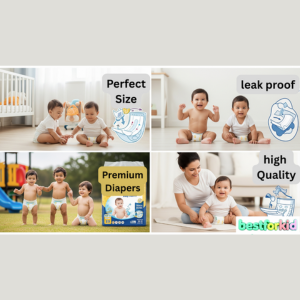
2025’s Best Baby Diapers in India Every Parent Should Know
Finding the right diaper can be a game-changer for both parents and babies. In this guide, we’ve rounded up the best baby diapers in India for 2025 that offer superior comfort, absorbency, and skin protection. Whether you’re looking for budget-friendly options or premium brands, this list helps you make the right choice for your little one’s needs.
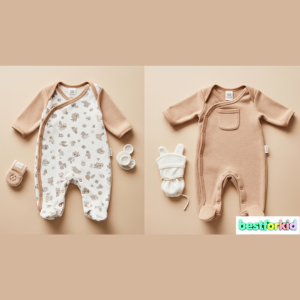
Newborn Clothing Made Easy: Comfort Meets Practicality
Dressing your newborn doesn’t have to be complicated. This guide simplifies your shopping by focusing on clothes that are soft, breathable, and easy to wear. Discover top picks for rompers, onesies, and sleepwear that combine comfort with convenience—perfect for your baby’s delicate skin and your daily routine.
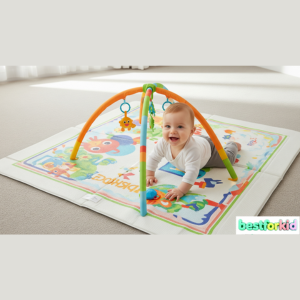
10 Best Baby Play Mats for Comfort, Safety & Entertainment
A good play mat offers more than just a soft surface—it encourages sensory development, tummy time, and safe play. We’ve curated the best baby play mats of 2025 that tick all the boxes: comfort, safety, durability, and design. Explore options that turn your floor into a fun and nurturing environment for your baby.

